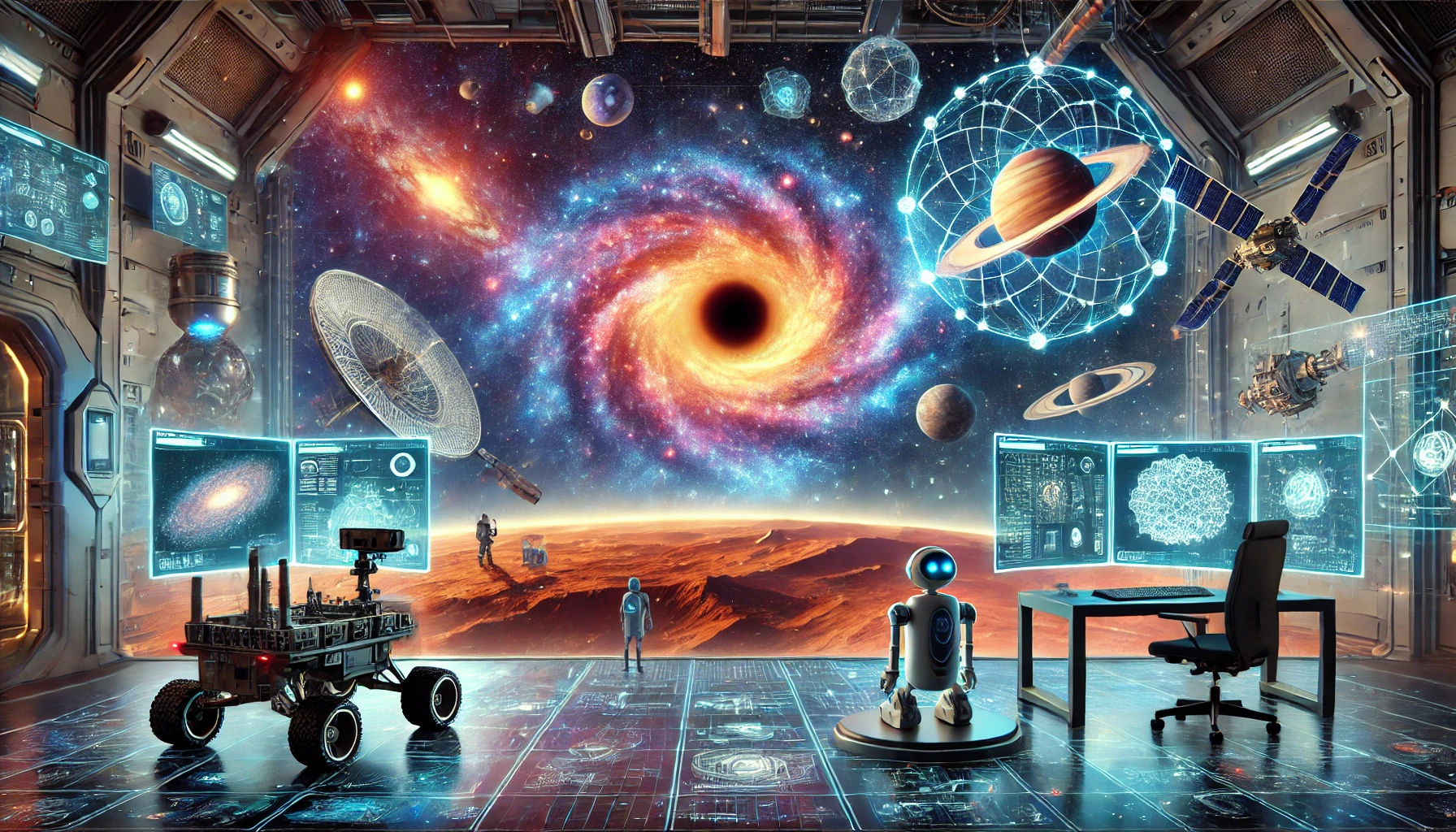Some of the most stunning discoveries in space happened by accident—astronomers scanning the sky, only to stumble upon something they never expected. That kind of luck still plays a role, but artificial intelligence (AI) is turning space exploration into something far more precise and efficient. Instead of waiting for a scientist to sift through mountains of data, AI can detect patterns, identify anomalies, and even predict cosmic events before they happen. The universe isn’t getting any smaller, but our ability to understand it is growing at an incredible rate.
From identifying exoplanets to steering rovers across alien landscapes, AI is changing how we study the cosmos. It’s helping us reach further, see deeper, and make sense of the unimaginable.
AI and the Search for Exoplanets
Finding planets beyond our solar system used to be like spotting a grain of sand on a beach—nearly impossible without years of analysis. AI has made the search faster and more reliable.
Detecting Planets in a Sea of Data
Space telescopes like Kepler and TESS collect vast amounts of information. Scientists used to comb through this manually, but AI can now analyze years’ worth of observations in days. It scans for the telltale dimming of a star when a planet passes in front of it and even distinguishes real planets from false alarms.
Identifying Habitable Worlds
AI does more than spot planets; it assesses their atmospheres. By analyzing light passing through a planet’s atmosphere, AI can detect signs of water, oxygen, and other elements that hint at habitability. This means we’re closer than ever to identifying planets that could support life.
AI-Powered Telescopes and Deep Space Imaging
The human eye is powerful, but AI-enhanced telescopes see far beyond what we ever could.
Sharpening Cosmic Images
Telescopes like the James Webb Space Telescope capture images that AI can refine, removing noise and correcting distortions. This means clearer images of distant galaxies, nebulae, and even black holes.
Spotting the Unusual
AI doesn’t just improve images—it finds what we might overlook. It has flagged strange celestial objects, helping scientists identify previously unknown types of stars, galaxies, and interstellar events.
Space Exploration: Smarter Rovers and Probes
Robots have been exploring Mars for years, but AI is making them far more independent.
Self-Navigating Rovers
Mars rovers like Curiosity and Perseverance once relied heavily on commands from Earth. Now, AI allows them to make decisions on the spot, avoiding obstacles and choosing the best paths. This speeds up exploration and allows rovers to cover more ground.
AI in Autonomous Spacecraft
Deep-space probes can’t afford to wait for Earth’s instructions. AI helps them react in real-time—adjusting their trajectory, avoiding hazards, and even choosing where to focus their instruments. This is especially useful for missions in uncharted regions, where surprises are guaranteed.
Predicting Cosmic Events
AI isn’t just observing space—it’s predicting what’s coming next.
Foreseeing Supernovae and Other Explosions
Massive stars don’t just vanish. They go out with a bang, releasing energy that can outshine entire galaxies. AI scans the sky for the first signs of these explosions, allowing scientists to study them in real-time.
Tracking Dangerous Asteroids
Near-Earth objects (NEOs) pose a risk to our planet. AI continuously scans for asteroids that might cross Earth’s path, identifying threats early enough for action to be taken.
AI in Space Communication and Data Processing
Getting data from space isn’t just about collecting it—it’s about making sense of it.
Efficient Signal Processing
Radio telescopes listen for signals from deep space. AI filters out the noise, ensuring that the most valuable data isn’t lost in the clutter. This is vital for SETI (Search for Extraterrestrial Intelligence) efforts, where AI is helping analyze massive amounts of radio signals in the hunt for signs of alien life.
Streamlining Space Missions
From the International Space Station to deep-space probes, AI helps optimize operations. It can manage life support systems, predict maintenance needs, and even assist astronauts with decision-making.
AI and the Future of Space Exploration
AI is setting the stage for the next giant leap in space exploration.
Assisting Human Missions
Upcoming moon and Mars missions will rely heavily on AI. It will assist astronauts with navigation, medical diagnostics, and even resource management.
Building AI-Driven Space Stations
Future space stations and lunar bases could use AI to manage energy, monitor air and water supplies, and keep habitats running smoothly without constant human intervention.
Final Thoughts
AI isn’t replacing astronomers or astronauts—it’s empowering them. It’s helping us sift through the overwhelming amount of data space exploration generates, uncovering patterns, and making discoveries that would have taken centuries by traditional methods. The future of space isn’t just about rockets and spacecraft. It’s about intelligence—both human and artificial—working together to understand the universe in ways we never imagined.
